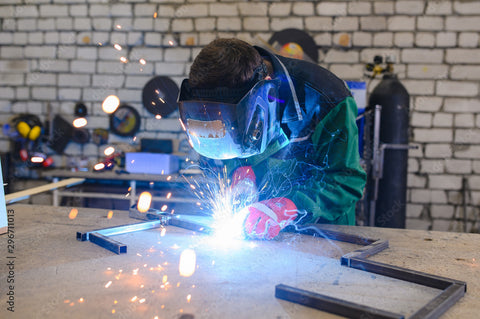Whether you’re new to welding or you have a ton of experience, no one wants to break a weld. Broken welds need to be reground and they use up resources such as filler metal and shielding gas. In addition, every time you need to grind and re-weld a broken weld, you lose valuable time. Diagnosing a broken weld is an important part of running an effective welding business and ensuring you can effectively complete safe welding projects at home.

The Wrong Filler Metal Will Break a Weld
Before you begin welding, make sure you know what kind of metal you’re welding. If you’re not sure, consider having a few different kinds of filler metal on hand just in case. Sometimes it may help to run your work piece to the local metal shop or someone with more experience to find out if you’re matching up your filler metal correctly.
Too Much Grinding Will Break a Weld
Depending on the application for your metal work piece, you may not need to grind your weld joint in order to smooth off the weld. This will prevent you from accidentally grinding away too much of the weld in the process. However, if you need to grind your weld down, you’ll need to make sure you achieve proper penetration for the weld joint.
Break a Weld Without Proper Penetration
One of the ways you can ensure that you create a deep and strong weld is to bevel the weld joint so that you can easily lay a stringer right into the weld joint. This provides enough weld penetration so that even if you need to grind it down, you’ll have a deep weld that uniformly holds together.
Break a Weld Without Enough Preheating
You often need to preheat a weld in order to create a strong enough weld. This keeps the work piece at a temperature that is closer to the filler metal so that it joins together more effectively. Most welders keep a torch on hand, using a gas such as propane or acetylene, in order to preheat metal before they begin welding.
Too Much Heat May Break a Weld
If you’re welding with too much power and melting a lot of the metal, you’ll cause the metal to expand and contract too much during the welding process. This will create an unstable weld joint and will lead to a weaker weld by the time you’re done. The key to welding is managing your heat so that the work piece isn’t blasted but that it isn’t left too cold either. In addition, if you’re TIG welding, it may help to cool your weld slowly in a bucket of sand.
There are plenty of other reasons why a weld may break, but this list will get you started in your trouble-shooting process for making effective welds.
Learn more about solving weld problems at Baker’s Gas and Welding.



